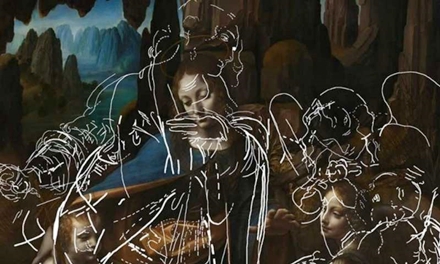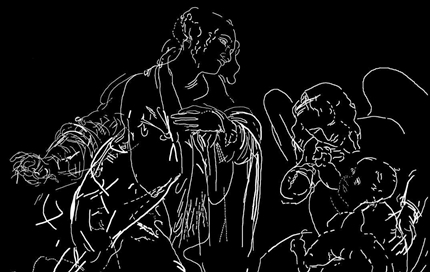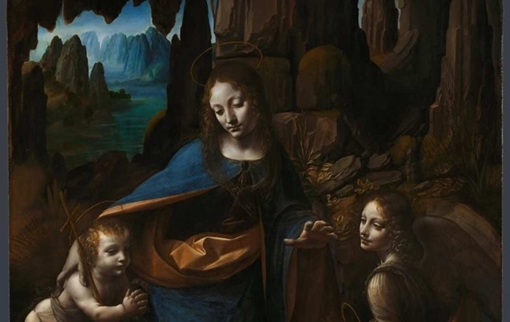|
ARTE E CIÊNCIA
New algorithm helps uncover forgotten figures beneath Da Vinci painting. Imperial College London's Professor Pier Luigi Dragotti and National Gallery's Dr. Catherine Higgitt used the new algorithm combined with a technique called macro X-ray fluorescence (MA-XRF) scanning, which maps chemical elements within paintings.  Imperial and National Gallery researchers have used a new algorithm to help visualise hidden drawings beneath Leonardo Da Vinci's Virgin of the Rocks. Credit: Imperial College London
Professor Dragotti, of Imperial's Department of Electrical and Electronic Engineering, said: "It was like looking for a needle in a haystack, but such a great feeling to see the wings and head finally uncovered." When art meets science Researchers at the National Gallery had already discovered, using infrared imaging, parts of Leonardo's initial drawings underneath the painting's surface, which included the Virgin in a different pose placed higher up on the panel. More recently the team used MA-XRF to non-invasively scan each pixel of the painting to detect different chemical elements within the materials Leonardo used in the painting.  Initial drawings underneath the painting’s surface. Credit: Imperial College London
At Imperial, Professor Dragotti developed the algorithm to automatically process the huge amount of data from the MA-XRF scans, improving on the existing, more manual methods and producing better, more reliable images to help them visualiz the data. He said: "Each pixel contained different amounts of each element, within various layers. We analyzed each pixel individually before combining them to see all the underdrawings in the painting. This revealed a much sharper image of the angel and baby." Dr. Higgitt said: "Before, we were getting very weak signals from the zinc within the painting due to its overlap with other elements, but the algorithm has given us more confidence in the signals that relate to the underdrawing." "It's been a rewarding experience to learn about and combine our different fields. The findings could also help us to reach out to more varied and unexpected audiences."  Credit: Imperial College London
Professor Dragotti will now look to combining imaging techniques and artificially intelligent algorithms to extract more hidden information from paintings.
By Caroline Brogan, Martin Sayers and Mariana Kneppers. Imperial College London. Posted: Feb 04, 2020.
|
||||||||||||||||||||||||